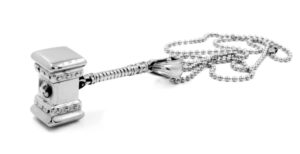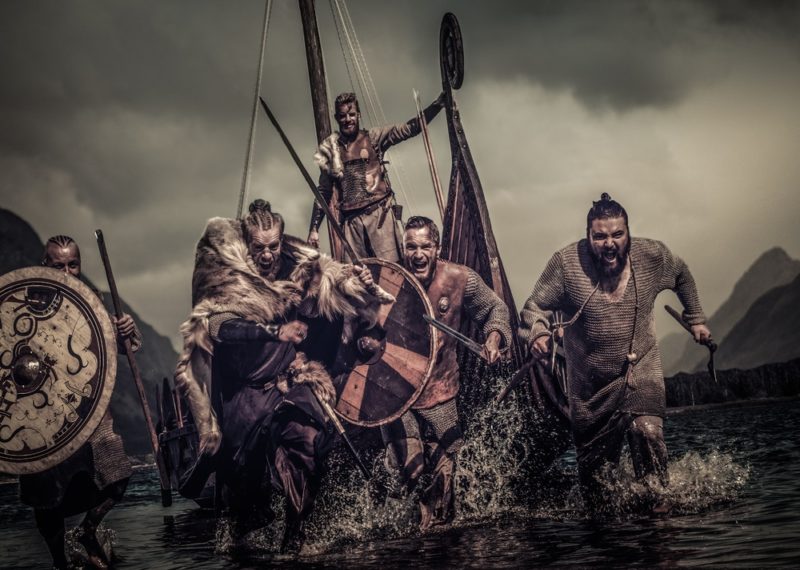In the Viking Age, both men and women wore jewelry, which was usually handcrafted of precious metals. The Viking created a variety of jewelry, including silver arm rings, armbands, neck rings, wedding rings, regular rings, bracelets, and a variety of other decorative pieces, most of which were made of silver and gold.
Despite the fact that the Norsemen had a lot of silver and gold in their jewelry, neither of these precious metals came from Scandinavia. The majority of the silver and gold used to make the jewelry is said to have come from coins collected via trades with other countries.
Necklaces and Neck Rings
Thor’s Hammer Necklaces were embellished with a variety of pendants, most of which were made of glass. The majority of pendants used during the Viking Era had sentimental value. They were primarily acquired as presents, souvenirs, or sacred emblems from Nordic mythology.
In addition to traditional Viking necklaces, these people also made neck rings, which, according to archaeological findings, were less common than necklaces. Additionally, archaeologists believe that necklaces were worn by both men and women as a sign of prosperity.
Viking Jewelry
The Vikings melted all kinds of expensive art and jewelry. Viking jewelry was usually fashioned of silver or bronze and was used by both men and women, with golden jewelry being reserved for the aristocracy. Brooches and Viking necklaces were used by women to keep their garments together. Rings, on the other hand, were used by men. These rings were not just used on fingers; they were also used on wrists, arms, and necks. Warriors also ornamented their weapons, particularly the hilt of their swords.
Moreover, these people made money in a variety of ways. They started out as traders. Viking coins and runes have traveled to every corner of the globe. The Vikings eventually discovered that plundering the monasteries of Ireland, Britain, and Northern Europe was a more convenient way to obtain precious metals and other luxury goods.
Viking ships were quick at the time, and British coast monasteries were isolated and poorly protected. After an attack on England’s Lindisfarne abbey in 793, the Viking “reign of terror” is said to have begun. The Vikings “had a penchant for everything that looked attractive,” says Glasgow Museums archaeologist Colleen Batey. Many of these territories were eventually colonized by the Vikings, who chose to take over rather than extort their southern neighbors.
Viking Necklace Meaning
More than only for its monetary value, jewelry was worn as a means of identification rather than protection. It may be able to determine a person’s position and, in some cases, their genealogy or political sympathies based on their jewelry.
In order to nurture and maintain loyalty and peace throughout the nations, kings and the well-to-do in the Viking land had masses of beautiful jewelry that they freely handed to their people, soldiers, and other leaders across the seas.
Wives handmade talismans (Viking necklace) with an empowering and protecting pendant since the battle was a common activity in those days. With the men gone for long periods, and danger and hazard in their trail, wives made talismans with an empowering and protective pendant. They presented a Viking necklace to their soldiers before they set sail, believing that the Viking necklace could help them return home safely. We believe it to be real, based on their high success rate and popularity.
Viking Necklace History
These people were brilliant craftsmen who excelled at smelting their jewelry with unique and noteworthy materials, despite their brutal savagery. Necklaces and neck rings have always been popular among the Nordic people, and both men and women enjoyed accessorizing themselves with them. Furthermore, necklaces were greatly treasured in the culture, whether for ceremonial, decoration, or belief.
These intricate designs were created by using the wax process. This requires the creation of a wax mold of the desired symbol and the pouring of liquid metal into the mold. The wax is then chipped off, and the metal is polished to a high gloss.
Viking necklaces aren’t usually found among the heaps of jewelry discovered from antique burials. These people buried their deceased with their jewels and money to provide a support system in the afterlife, which they believed existed after death. Necklaces or talismans, it is said, had a larger symbolic value and were mainly kept within the family. They could be found hanging from a gravestone, most likely to keep an eye on their loved ones who have passed away.
Q&A
Why Did Vikings Wear Necklaces?
The main intention of wearing jewelry was to express their spiritual beliefs and social position, not to decorate themselves.
What Were the Necklaces Made of?
Majority of Viking jewelry was made of silver or bronze, with gold jewelry kept for the wealthy.
What Gemstones Did Vikings Wear?
Carnelian and rock crystal were purchased as completed beads and as rough.
Conclusion
Lastly, for the Viking, necklaces were a very personal item of jewelry. Their versatility made them a perfect present for both men and women, which added to their sentimental worth. The Viking had a hard time parting with their necklaces, unless in death.




